Today’s customers expect brands to understand their needs and offer them a highly personalized experience. They don’t want to see irrelevant ads, generalized product recommendations, and poor experience when they connect with their favorite business.
An average person uses 6 touchpoints while 50% regularly use more than 4 touchpoints to connect with a brand.
This forced businesses to switch to omnichannel marketing.
Let’s explore omnichannel marketing, its benefits and challenges, how you can create your omnichannel marketing strategy, and best practices to follow.
What is Omnichannel Marketing?
Omnichannel marketing refers to a customer-centric marketing approach where all the marketing channels work together integrated into a single system. It integrates all the touchpoints that you use and provides a seamless, continuous marketing experience to your ideal customers every single time.

The data is centralized which allows all the marketing channels to provide an uninterrupted experience to them.
For example, a potential customer sees a product ad online and then decides to call your helpful for a query. After a few days, the same person contacts customer support again through Messenger for another query and finally visits an outlet to buy the product.
The data from all these interactions is available across all the channels. This means when the person contacted a second time through Messenger, the customer agent knew the person’s history and served accordingly. The sales rep at the outlet knew all the previous interactions and potential customer queries that were addressed in the past.
Businesses that use 3 or more marketing channels have a 494% higher order rate than businesses that use a single marketing channel:
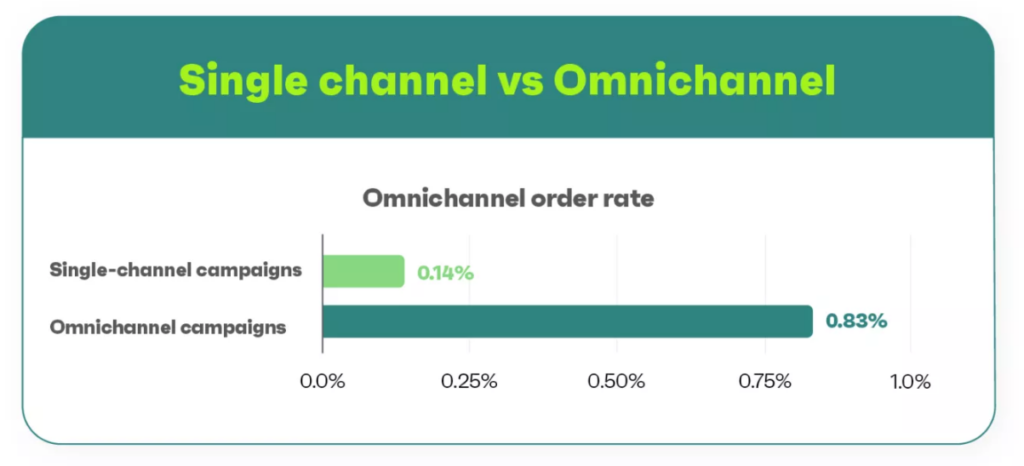
It also increases customer retention rate by 89% as opposed to 33% for businesses that don’t have a solid omnichannel marketing strategy.
That’s not all…
Omnichannel Marketing Benefits
Omnichannel marketing offers a wide range of benefits to your business which makes it a must-have. Here’s a breakdown of the major perks:
1. High Conversions and Revenue
Omnichannel marketing has a high conversion rate which leads to more sales, revenue, and profit. It lets you be where your ideal customers are and that’s what helps you generate more conversions.
Businesses that have a robust omnichannel marketing strategy see a 9.5% YoY increase in revenue while companies having a poor omnichannel marketing strategy see a 3.5% increase.
High annual revenue is an indication that omnichannel marketing increases sales across all channels.
2. Personalized Customer Experience
Omnichannel marketing improves customer experience. They don’t have to start fresh and this makes it easy for them to continue their journey.
Customers are at the center of the omnichannel strategy. It is a customer-centric marketing approach that’s driven by data. This enables your employees (whether a customer support agent or a sales rep) to offer highly customized and tailored services to potential customers (and customers) as they always have a complete record of customer touchpoints.
A study reported consumers want brands to know them at a personal level and 75% of consumers expect easy navigation in-store and online and that’s only possible when the brand has data on past interactions:

The top expectations of consumers from brands include:
- Make it easy for me to navigate in-store and online
- Give me relevant product recommendations
- Tailor messaging to my needs.
All of this can only be done via omnichannel marketing.
3. Consistent Messaging Across Channels
It improves your brand image and credibility as your marketing messages remain consistent across all channels. Consistent brand messaging helps you build strong customer relationships and it increases revenue.
A study reported that brands that have consistent messaging see 10-20% higher revenue.
Inconsistent messaging ruins your brand value and credibility. Imagine a person visiting your store after seeing a 20% flat off on a social media post realizing that there isn’t any flat discount.
These types of poor marketing moves can be avoided with an omnichannel marketing strategy.
4. Customer Loyalty and Retention
Customers acquired through an omnichannel marketing strategy have a 30% higher lifetime value. Omnichannel customers, according to a study, have a high repeat order rate. Seven percent of omnichannel customers generate 27% of revenue for brands:
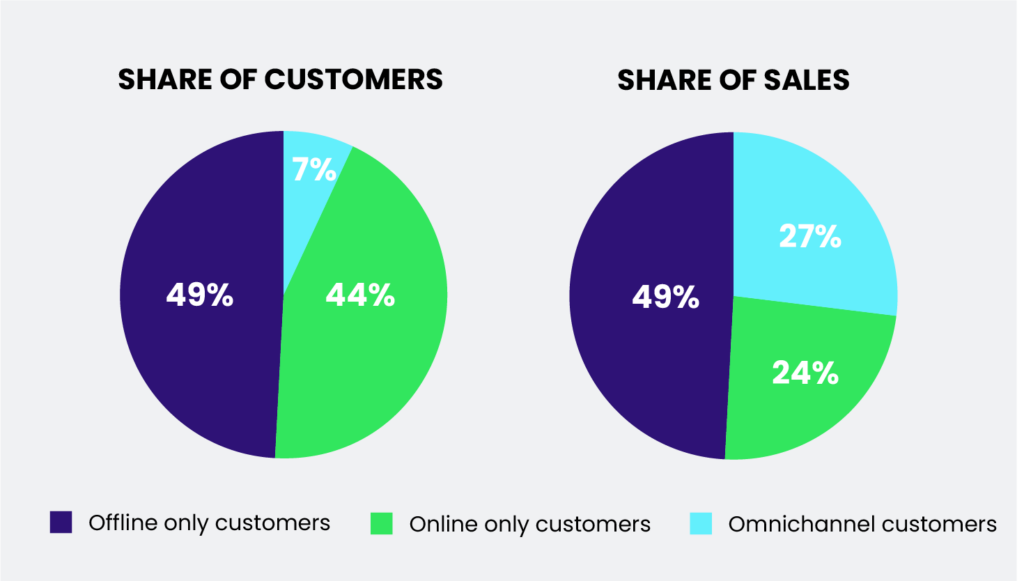
Not only are omnichannel customers loyal but they spend much more than traditional customers. This is all because it gets easier for them to engage with your company irrespective of the channel they use.
Omnichannel Marketing Examples
Here are some of the top businesses that are leveraging omnichannel marketing to grow their businesses. These examples will help you get ideas on how to use it for your brand:
1. Amazon
Amazon is hands down the best at omnichannel marketing. Customer profiles are linked to their phone number and email addresses which keeps their data synced across Amazon products (not just its marketplace).
For example, if you sign up for Amazon Prime and then later decide to join the Amazon Associate Program to promote affiliate products through your Instagram account, you’ll use the same account. You don’t have to fill in your details every single time which is annoying:

Amazon’s recommendation engine is another great example of omnichannel marketing that recommends highly personalized products based on your buying history, demographics, and other variables.
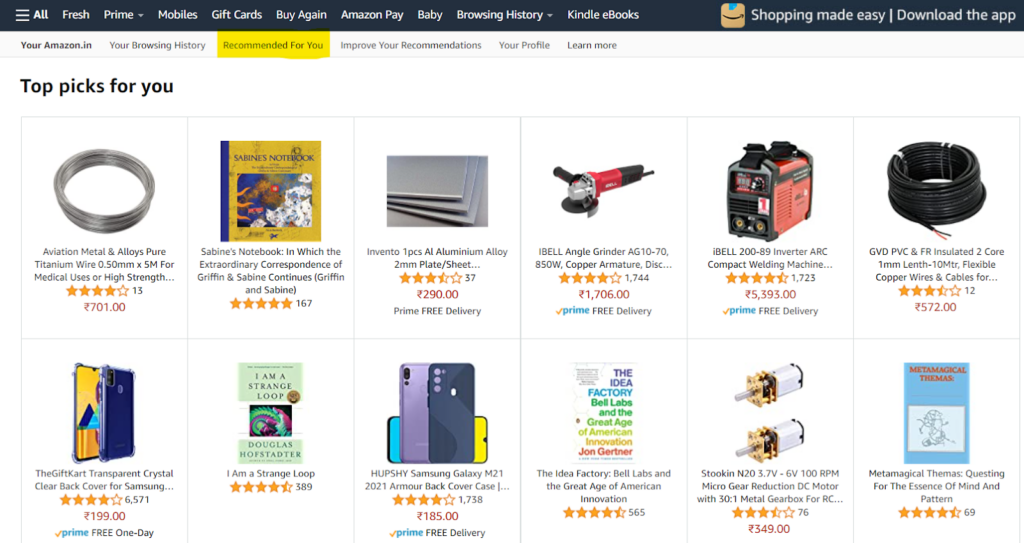
It makes your shopping experience a breeze.
2. IKEA
IKEA has done an exceptional job of providing its customers with a unified shopping experience. Customers can save products in the app for in-store shopping and you can manage deliveries through the shopping app easily.

It has a fully integrated online and in-store shopping experience which is a great achievement.
3. Starbucks
Starbucks is probably the most discussed business out there for omnichannel marketing as it has done exceptionally well. Its rewards app is one of the best examples of omnichannel marketing that is synced across all touchpoints.

For example, customers can check their rewards card online, in-store, via phone, or through the app, and the data is always synced in real-time irrespective of where you interact with Starbucks.
It’s more about experience than coffee.
Omnichannel Vs. Multichannel Marketing
Both omnichannel and multichannel marketing look similar but these are two different approaches to marketing.

Omnichannel marketing reaches customers through different channels that are all integrated and connected. It revolves around the customer where you try to improve the experience wherever your customers go.
Multichannel marketing is a marketing strategy where you reach customers through different marketing channels but in this case, the channels aren’t connected and integrated. This lacks the unified experience that customers receive in omnichannel marketing. It focuses on letting customers connect with your brand via isolated and standalone touchpoints.
Here’s a better depiction of how these two marketing approaches compare with their major differences:
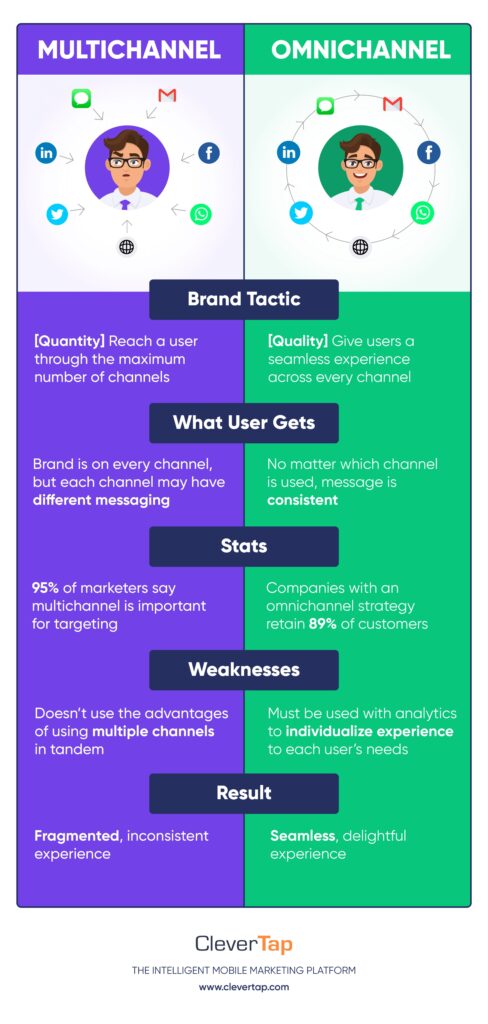
Both these marketing strategies are effective but they aren’t the same (as often confused by marketers and businesses).
Omnichannel Marketing Challenges
While omnichannel marketing has become a norm it doesn’t mean it’s easy. Here’s a list of the major challenges that businesses face when dealing with omnichannel marketing strategy:
1. Inability to Leverage Data Properly
Omnichannel marketing relies on one thing: Data. You need to use it smartly and proactively for decision-making and ensure the experience is synced in real-time.
It isn’t easy, however.
As much as 61% of marketers say that they don’t have the necessary sources to use data for omnichannel marketing and 32% said that siloed organizational structures are a big hurdle:
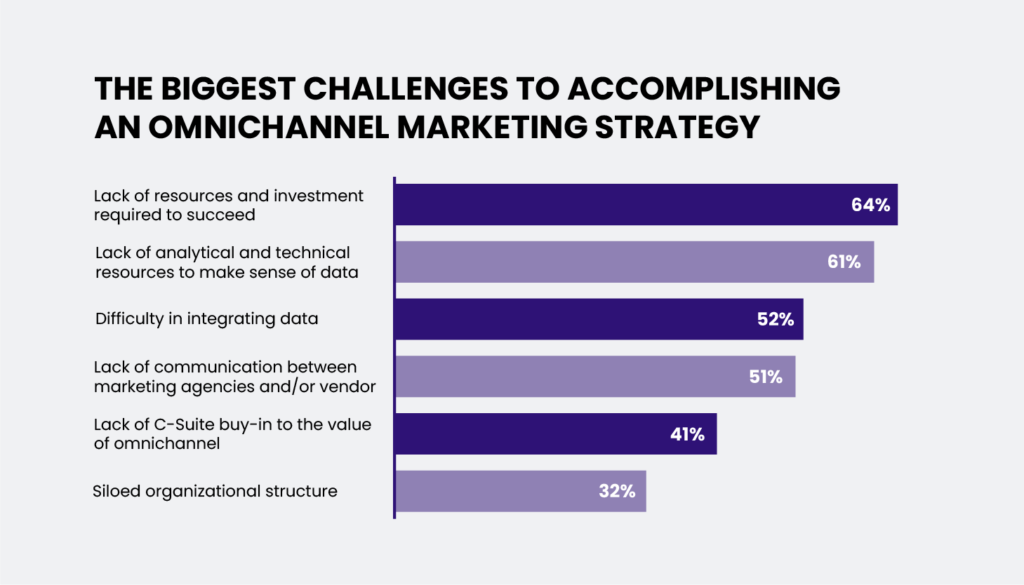
Having data is one thing and having resources and technical tools to analyze and use it is another thing. For a successful omnichannel marketing strategy, you need both.
2. Integration Issues
A related challenge that stems from improper data management is integration difficulties. Over 52% of marketers specifically mentioned data integration challenges as a hurdle in omnichannel marketing strategy.
Integrating online and offline marketing channels is the biggest challenge.
For example, data from a physical store is extremely hard to integrate with online channels. You need detailed information about every walk-in customer to figure out the complete customer journey. It’s extremely hard to collect relevant data on touchpoints they have interacted with.
Data from offline marketing campaigns such as TV ads and billboards is hard to integrate with online marketing channels. It’s not impossible, but requires advanced tools and platforms such as beacon and RFID tags.
3. Attribution Problems
Attribution plays a key role in omnichannel marketing as it helps you better understand customer journeys. Marketing attribution lets you understand what touchpoints a customer interacts with right from the first to the last interaction and how marketing tactics and channels contribute to the conversion.
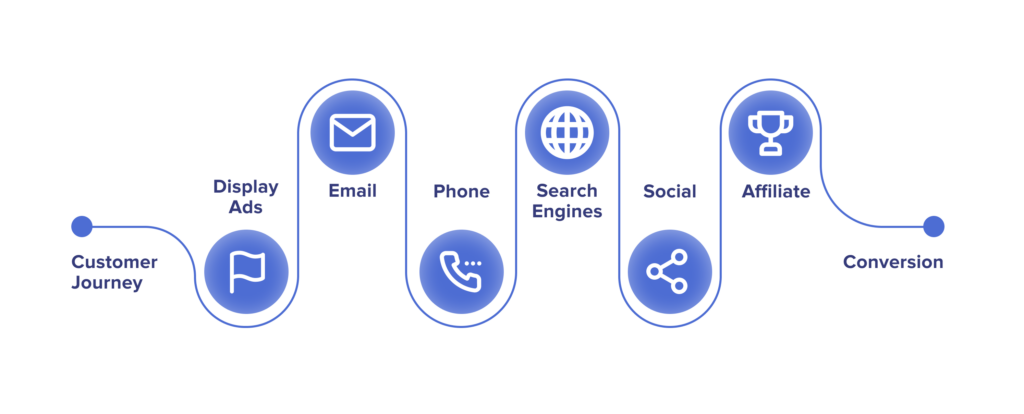
Attribution works seamlessly for online marketing channels as long as you have proper tracking codes enabled. It gets problematic to attribute conversions and track complete customer journey for offline marketing channels.
Using the appropriate crediting model for conversion and sale attribution is another challenge. How to allocate different values to marketing channels based on their value and importance in conversion is a strategic issue that needs to be addressed appropriately.
4. Inventory Management
When you have multiple sales channels, it gets complicated to manage inventory levels across all the touchpoints. Real-time inventory management across geographically dispersed warehouses is a much bigger challenge for omnichannel marketing.
You need to use a single, centralized inventory management platform instead of using different tools. It should be integrated with your sales and invoicing tool to ensure it updates stock levels in real time.
How to Create Omnichannel Marketing Strategy for Your Business
Despite challenges, omnichannel marketing is a highly effective strategy for businesses of all sizes. Getting started with it requires the development of a systematic process. Here’s a step-by-step guide on how to create your strategy:
1. Understand Your Target Audience
You need to know your ideal customers to run a successful marketing campaign. You have to go the extra mile for omnichannel marketing. If you have developed buyer personas, it’s time to update them by collecting primary data.
The primary variables you need to include in buyer personas for an omnichannel marketing strategy include:
- Marketing channels and touchpoints they use
- Preferred buying method
- Detailed demographic data
- Purchase history
- Content preferences
- Marketing collateral preferences.
Most of this data can be collected through surveys and interviews. You need to reach out to your customers and target audience and ask them directly.
The second source is existing data from your analytics tool, CRM, sales platform, and marketing and advertising campaign data. It’ll give you a better idea of different sub-groups within your primary target audience and how each one interacts with your brand.
Use data from these sources to update buyer personas.
Make sure you have one buyer persona per target market that truly represents who your ideal customers are.
2. Identify Channels
Once you have collected enough data about your customers, you’ll be in a better position to identify what channels to use for omnichannel marketing strategy.
There isn’t any limit to the number of channels you can use.
But you should stick with the ones that:
- Your customers are already using (channels that have the highest conversion rates)
- Your potential customers have shown interest in (through primary data collection).
You should ideally use at least 3 channels. Keep it low to start with as adding more channels means high cost and more complications.
Keep it simple.
Avoid adding offline channels to the mix right away. Keep it separate if you sell physically via your store. Adding an offline channel to your omnichannel marketing strategy is complicated and requires a major IT infrastructure upgrade.
You should add new touchpoints gradually.
For example, you can offer ‘buy online and pickup at store’ service effortlessly as it only requires a centralized inventory management system. Similarly, you can offer ‘return at store’ service.
The idea is to have a clear list of channels that need to be added to the omnichannel strategy. If you have a massive list of touchpoints, shrink it to the best channels.
3. Understand and Map the Customer Journey
Having a clear understanding of what steps and actions people take to become customers helps you optimize and attribute the most crucial channels.
Customer journey is the visual representation of a customer’s experience with your brand from awareness to becoming a customer. It’s a journey map that looks like this:

The path to becoming a customer isn’t fixed as each customer follows a different route. When you analyze customer journey via your analytics tool, you can develop a general map that the majority of your customers follow.
You need to use a dedicated customer journey mapping tool (such as Smaply or Microsoft Visio). These tools offer tons of features that make it easy to understand the exact path customers take to conversion. You can visualize the customer journey with major touchpoints and actions users take.
When you have full access to customer journeys across your customer base, you can identify top touchpoints, customer pain points, and manage customer-brand interactions.
Since the customer journey is extremely flexible, you need to monitor and manage it continuously to tweak your strategy accordingly.
4. Integration
Once you have identified marketing channels and mapped out the customer journey, it’s time to integrate channels.
Integration centralizes your data and makes it possible to run different channels collectively. You need advanced tracking preferably conversion tracking to monitor and track visitors after their first interaction. This should be coupled with a robust customer data management and CRM platform.
A CDM manages customer data by creating customer profiles from all the different sources while a CRM tool helps you manage customer relationships by monitoring their purchase history and demographics.
If you are using CDM, great.
Integrate it with your CRM tool and then connect it with all the other apps and tools your business uses.
If you don’t have CDM (which isn’t necessary initially for omnichannel marketing), use the CRM tool as a central platform and integrate it with other apps.
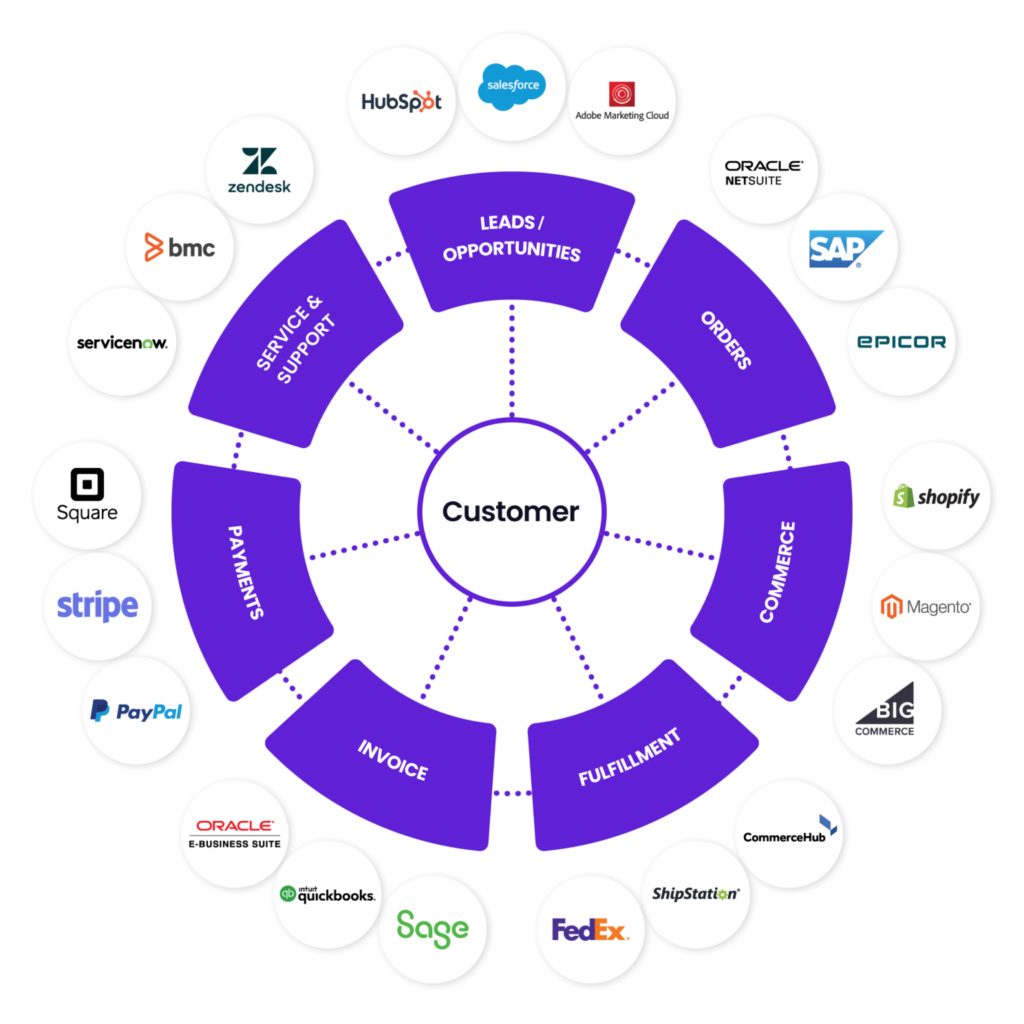
You can use digital kiosks and QR codes to integrate offline channels with online ones. The idea is to ensure all the data is centralized and your entire tech stack works together as a single system – not as silos.
That’s how omnichannel marketing works.
5. Ensure Personalization
The reason you have to use a CRM or ERP platform is to enforce personalization across all channels.
Marketing personalization means you use data to offer customized experience and products to potential customers. You can do this with marketing automation and setting up workflows.
For example, remarketing ad campaigns are a perfect example of how to leverage data to ensure personalized advertising.
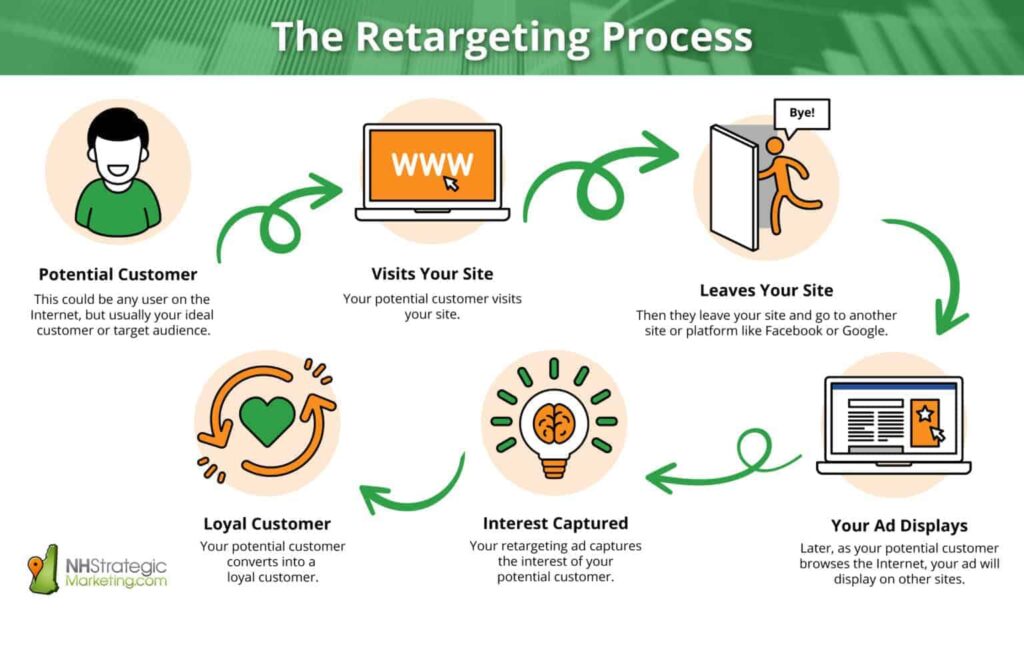
These ads run on complete autopilot.
Similarly, you can set up automation workflows in your marketing tool to recommend relevant products to visitors based on their buying history.
Customers love being valued and they expect brands to offer them personalized experience and recommendations. That’s what you are supposed to do.
Omnichannel marketing without personalization won’t work. You need to ensure that the experience your audience receives is personalized whether it’s an online or an offline channel.
6. Track and Optimize
Like any other marketing strategy, omnichannel requires regular monitoring and tweaking.
Use the right metrics to measure the performance of your omnichannel marketing. The primary metrics you need to use include:
- Customer acquisition cost
- Conversion rate by channel
- Customer lifetime value
- Customer retention rate
- Average order value
- Customer satisfaction measured through CSAT, NPS, and CES
- Revenue by channel.
An omnichannel marketing strategy requires a lot of tweaking based on performance.
For example, a channel that consistently has a below-average conversion rate needs attention. Figure out what’s wrong with the channel and see if it can be fixed. If your customers don’t like using a specific channel, remove it from your strategy and focus on high-performing ones.
It’s a fact that not all channels will perform equally well. You need to channelize your budget and efforts to the top-performing ones and run A/B tests on low-performing channels for improvement.
This should be a continuous process.
Omnichannel Marketing Best Practices
Here are the advanced tips and best practices to help you run an omnichannel marketing strategy successfully:
1. Segment Your Audience
In other words, have detailed buyer personas.
Segmentation distributes your customers into distinct groups which significantly improves targeting and personalization. The best thing about segmentation is that it makes it easy to understand your customers and 80% of businesses report high sales after implementing segmentation:

As much as 90% of companies reported that they get to know their customers better with the help of buyer personas and this increases the likelihood of understanding customer issues by 60%:

You can create segments automatically in your CRM and marketing automation tools. Here’s how to segment customers for better CX:

- Demographic
- Geographic
- Value-based
- Behavioral
- Psychographic.
2. Collect Primary Data
A common mistake brands make when running an omnichannel marketing strategy is that they rely too much on internal data that they have and ignore primary data.
Analytics might show you that a certain marketing channel is underperforming and you can run unlimited A/B tests, but if you don’t ask your customers – it won’t help much.
Primary data is collected from the source (your audience) via custom-developed surveys, interviews, and focus groups. For example, you can run a survey and ask your customers what they don’t like about a specific marketing channel.
This will provide you with real insights that your analytics tool can’t provide.
Another benefit of primary data collection is that it helps you update buyer personas (and improves segmentation). This leads to better targeting, optimization, and customer experience.
Here’s how to collect primary data for the improvement of the omnichannel marketing strategy:
- Identify a problem
- Create a specific questionnaire and decide data collection technique
- Collect data from the right buyer persona
- Analyze data and make necessary changes
- Monitor performance
- Repeat.
3. Choose the Right Apps
Having the right marketing stack is essential for executing an omnichannel marketing strategy.
You don’t need just any apps, rather you need dedicated software to perform different functions. If you plan to use an all-in-one tool, that’s a big no.
Yes, it gets costly.
You need to make sure that you have a decent marketing budget and you are ready to invest in the right tech.
Here’s a list of types of platforms that are a must for omnichannel marketing:
- Customer relationship management tool like HubSpot or Salesforce
- Data analytics like Google Analytics
- Marketing automation software like Mailchimp
- Integration tool like Zapier
- Email marketing app like Brevo
- AI chatbot like Intercom
- Customer support platform like Zendesk.
4. Responsive Website
A fully responsive and mobile-friendly website optimized for all types of devices is essential for omnichannel marketing.
Your website should be designed appropriately so that it works for all types of devices seamlessly without breaking. Since you have to use dynamic content for advanced personalization, your site should have the ability to function properly.
The site should have:
- Flexible visuals
- Clean structure
- Easy navigation
- Responsive design
- Fluid grids
- Core web vitals compliant
- SEO-friendly.
Final Words
When done right (following the steps and guidelines above), omnichannel marketing will do wonders in terms of sales, customer loyalty, and branding. It sounds complicated, but it isn’t.
Most businesses use all basic tools already such as CRM, customer support, email marketing app, and others. And at some level, most businesses use omnichannel marketing. What you need to do is develop a strategy and up your game.
Start by collecting and analyzing relevant data and see where your business stands currently.
Then move from there.
Featured Image: Unsplash



